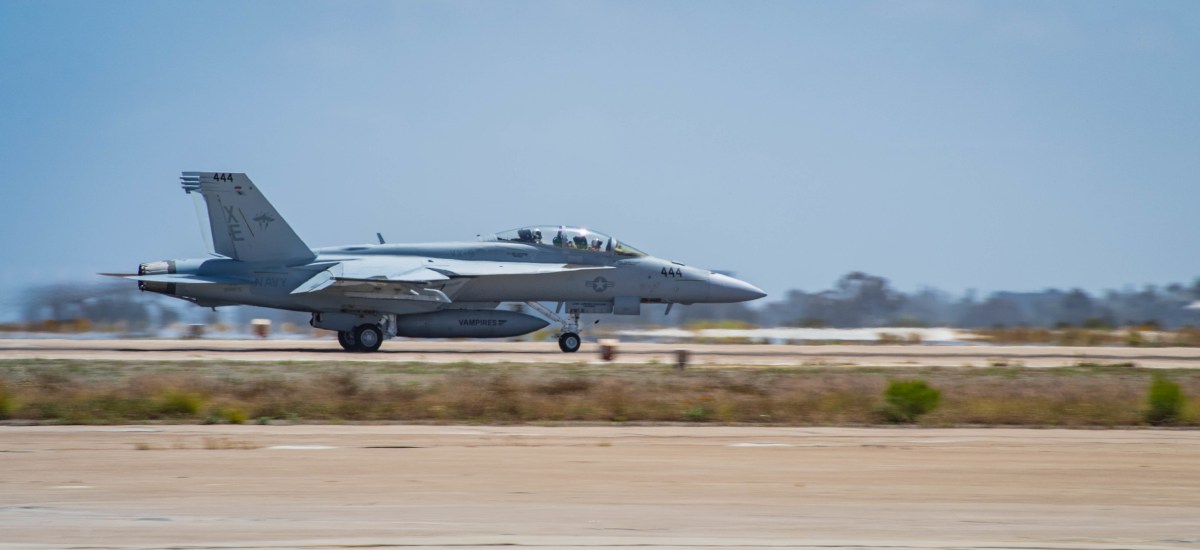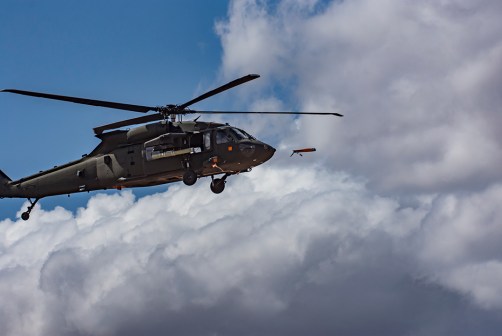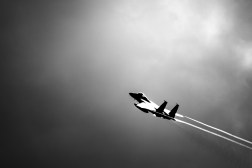Navy tests manned-unmanned teaming technology with Super Hornets, drones

The Navy and its industry partners recently conduct several flight tests that demonstrated the ability of manned F/A-18 Super Hornet fighter jets to team with unmanned aerial vehicle (UAVs), the service announced Friday.
The Pentagon views manned-unmanned teaming between piloted planes and autonomous drones — also known as robotic wingmen — as a key component of future warfare, and the Navy is trying to put the technology through its paces.
A series of four flight tests recently conducted by the F/A-18 and EA-18G Program Office (PMA-265) at Naval Air Warfare Center Weapons Division, Pt. Mugu, California, successfully demonstrated the ability of a Block III Super Hornet to command and control three drones, according to a Naval Air Systems Command (NAVAIR) press release.
“During the flight tests, F/A-18 pilots entered commands into a third-party tablet instructing the UAVs to perform various maneuvers used in combat missions. The tablet was connected to the Block III’s adjunct processor, known as the Distributed Targeting Processor – Networked (DTP-N), which transmitted these commands to the UAVs. The UAVs successfully carried out all commands given by the pilots,” according to the release.
The press release did not identify what types of UAVs took part in the tests or what combat maneuvers they performed. NAVAIR did not immediately respond to a query from FedScoop.
In the release, Michael Yu, PMA-265 experimentation and demo lead, said “the comprehensive analysis of data captured during these events further informs development and refinement of technologies that could potentially be incorporated into Navy platforms.”
The demonstrations were supported by Air Test and Evaluation Squadrons (VX) 23 and 31 as well as Boeing and BAE Systems.
“The Navy conducts exercises of this nature with industry partners to evaluate current and future capabilities,” Yu said.
Boeing is the manufacturer of the Super Hornet. The Block III is the latest and most advanced variant, and its computing system is designed to support future manned-unmanned teaming.
Boeing also developed new software loads for the DTP-N to transmit the commands from a third-party vendor’s tablet, according to a Boeing press release. The software development, tablet connection to the fighter and all flight tests were completed in less than six months, according to Boeing.
“Future fighter pilots will be the quarterback of the skies, orchestrating commands and controlling UAVs from the integrated Block III touch-screen cockpit,” said Mark Sears, Boeing vice president and program manager of F/A-18 and EA-18G programs. “Block III Super Hornet is the bridge to the future and is a risk reducer for the Navy that is delivering on teaming, networking and interoperability now.”
BAE Systems did not immediately provide details to FedScoop about its role in the technology demonstration.
The Navy envisions robotic wingmen and other unmanned platforms reducing risks to aviators, extending the range of the fleet, enhancing combat capability, and serving as communication relay nodes, among other mission tasks.
Capt. Jason Denney, program manager for PMA-265, said manned-unmanned teaming has the potential to “transform tomorrow’s fleet into a more lethal, better-connected force.”
Better connecting the U.S. military’s forces is a key aim of the Pentagon’s Joint All-Domain Command and Control (JADC2) concept, which seeks to more effectively link the Defense Department’s various sensors, shooters and data networks.
“As part of a Joint All-Domain Command and Control network, teams of UAV conducting ISR missions led by the latest Super Hornets equipped with network-enabled data fusion and advanced capabilities would provide warfighters across the Joint Force with significant information advantage,” Scott Dickson, Boeing’s director for multi-domain integration, said in a press release.



